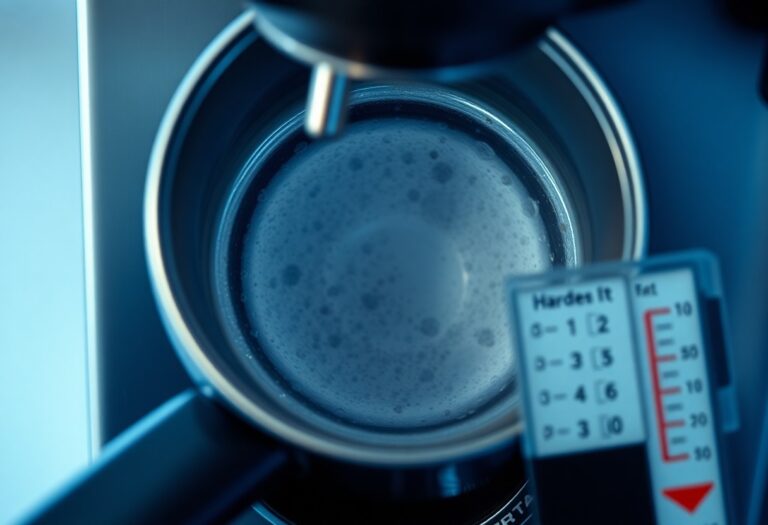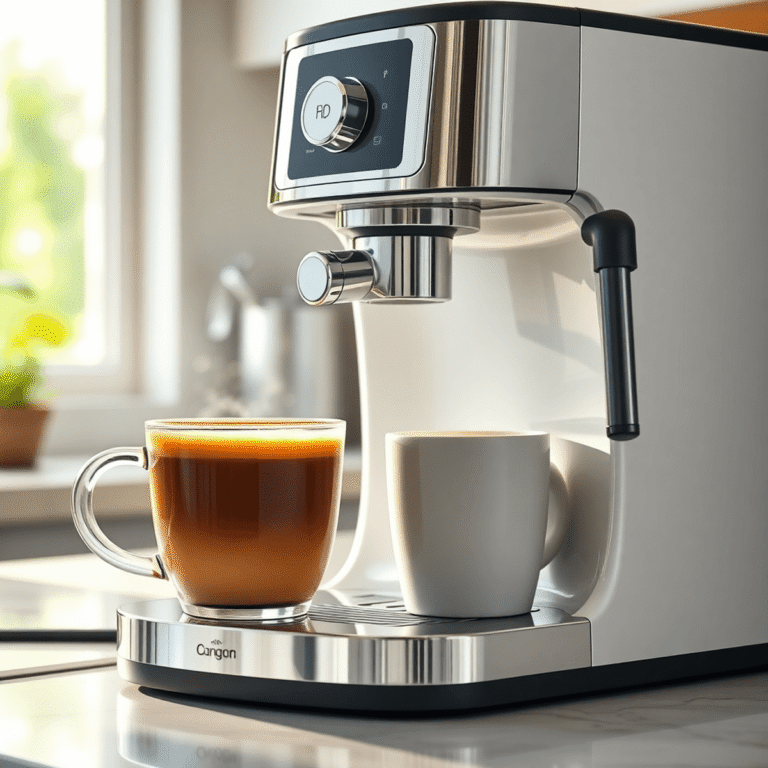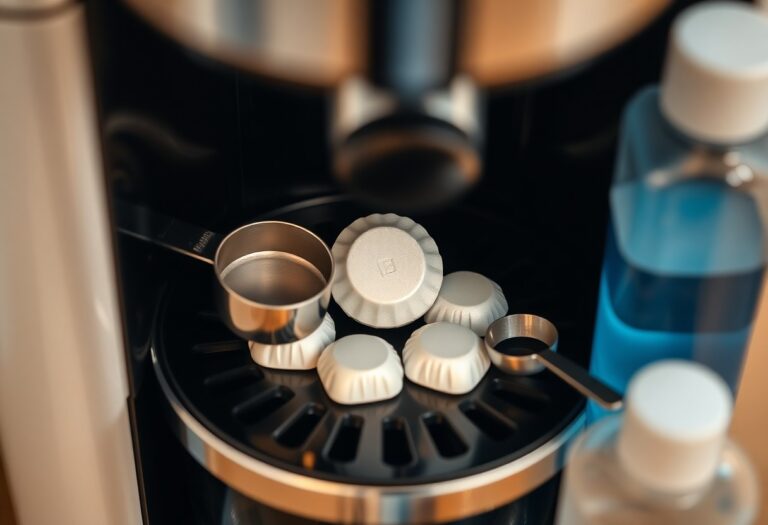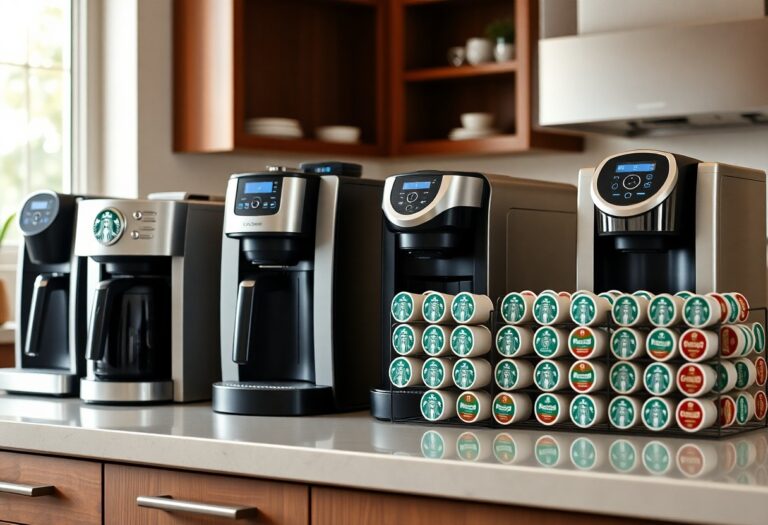What is the Best Bar Pressure for a Coffee Machine – Optimal Settings
Coffee enthusiasts know that bar pressure is vital to achieving the perfect brew. Understanding the ideal pressure settings for your coffee machine can greatly enhance your coffee experience, ensuring rich and flavorful results. Generally, a range of 9 to 11 bars is recommended for espresso machines, providing a balanced extraction while preventing under-extraction or bitterness. By adjusting your machine to the optimal pressure, you not only improve your coffee’s taste but also enhance aroma and crema. Let’s explore how bar pressure impacts your daily cup and how you can achieve the best results in your coffee brewing.
Key Takeaways:
- The optimal bar pressure for a coffee machine is generally between 9 to 10 bars for espresso extraction.
- Higher pressures may lead to over-extraction, resulting in a bitter flavor, while lower pressures can under-extract, causing a weak taste.
- Consistency in bar pressure is important for achieving a uniform taste and quality in each shot of coffee.
- Different coffee machines may have varying settings and capabilities; thus, adjustments may be necessary based on equipment and personal taste.
- Bar pressure should be tested with different coffee beans, as the ideal setting can also depend on the grind size and roast level.
The Pressure Paradox: Why Bar Pressure Matters
Bar pressure impacts every aspect of your coffee brewing experience, determining both the extraction process and flavor delivery. Striking a balance between pressure and time elevates your coffee quality, unlocking the potential for rewarding flavors and aromas. Many enthusiasts find that adjusting pressure is as significant as choosing the right beans, thus understanding this fundamental aspect can transform your cup.
The Science Behind Bar Pressure and Extraction
Extraction refers to the process of dissolving solids from coffee grounds into water, and bar pressure plays a pivotal role in this phenomenon. At optimal pressure levels, the water permeates the coffee’s surface effectively, facilitating an even extraction of oils, flavors, and acids. For instance, when brewing at around 9 bars, water flows through efficiently, yielding that rich, velvety crema you love, while lower pressures may leave your espresso weak.
How Pressure Influences Flavor Profiles
Increasing or decreasing bar pressure alters the flavor components extracted from the coffee beans. A high-pressure extraction emphasizes the coffee’s sweetness and body, producing a more robust taste. Conversely, brewing at lower pressures tends to highlight acidity, resulting in a sharper profile. Maintaining the right bar pressure not only enhances the overall balance but can also reveal distinct tasting notes that may otherwise go unnoticed.
For example, consider how a slight adjustment from 9 to 10 bars can enhance the sweetness and dark chocolate notes of a medium roast, while lower pressure may extract excess acidity, making the coffee taste overly bright or sour. The ideal balance, therefore, is vital to explore and fine-tune the unique characteristics of your favorite beans. Each bean may respond differently, turning what could be a simple cup into an extraordinary experience when you fine-tune your espresso machine accordingly.

Targeting the Sweet Spot: Optimal Bar Pressure for Different Brew Methods
Finding the ideal bar pressure significantly influences the extraction process and the resulting flavor profile. Typically, espresso machines operate best at a standard pressure of 9 bars, delivering rich, balanced shots. However, depending on your chosen brew method, these optimal settings may vary. Understanding how pressure interacts with extraction time, water temperature, and grind size can help you experiment and achieve the perfect cup, tailored to your taste preferences.
Espresso Machines: The Standard and Variations
For espresso machines, the gold standard is generally accepted as 9 bars of pressure during extraction. This level ensures that rich oils and flavors are efficiently extracted from the coffee grounds. Some machines may allow for variations, such as pre-infusion stages that may drop pressure momentarily. Italian espresso traditions offer different practices, with higher pressures of up to 10 or 11 bars sometimes utilized for varied flavor profiles, although this can lead to over-extraction if not monitored closely.
Alternative Brewing Methods: Adjusting for Pressure
Alternative brewing methods often require adjustments in bar pressure to match their unique extraction needs. Methods such as Aeropress or siphon brewing can utilize lower pressures, often around 3 to 6 bars, enhancing specific flavor notes without overwhelming the palate. With a more forgiving extraction window, these methods allow you to play with grind size and brewing time, enabling a greater exploration of diverse flavor profiles.
Adjusting the pressure when using alternative brewing methods is vital for customizing flavor profiles. For instance, while brewing with the Aeropress, employing a lower pressure can accentuate sweetness and acidity, creating a brighter cup. Siphon brewing benefits from a constant, moderate pressure that encourages a clean extraction, avoiding bitterness. Experimenting with these pressures not only allows you to explore various taste notes but also empowers you to refine your technique for a truly personalized coffee experience. The goal is always to find what best suits your palate while maximizing the coffee’s inherent characteristics.
High vs. Low: The Effects of Deviating from Ideal Pressure
Adjusting bar pressure too far from the optimal range can lead to significant changes in the flavor and quality of your coffee. If the pressure is too high, you risk over-extraction, while too low can result in under-extraction. Both extremes manifest distinct issues, which can unsatisfy even the most seasoned coffee drinkers. Understanding these effects helps you fine-tune your coffee-making process and achieve a more nuanced and balanced cup.
Over-Extraction vs. Under-Extraction
In the context of coffee brewing, over-extraction occurs when water is forced through the coffee grounds at a high pressure, extracting too many soluble compounds. This often results in a bitter taste, overwhelming the subtle flavors you desire. Conversely, under-extraction happens at lower pressures, where the water struggles to extract enough flavor, leaving your coffee watery and sour.
Flavor Imbalances: Bitterness or Sourness
Deviating from the ideal bar pressure leads to flavor imbalances. High pressure extracts harsh compounds, creating bitterness. In contrast, low pressure fails to extract fully, resulting in sour notes. Each deviation can completely alter the intended flavor profile of your coffee, from a balanced cup to an unpleasant brew.
A high bar pressure often pulls out the undesirable bitter compounds found deeper in the coffee beans. You might notice a dry, acrid flavor dominating your sip, overshadowing the more delicate fruity or nutty notes. On the other hand, lack of sufficient pressure can leave you with a bright, acidic cup whose flavors lack depth and complexity. Achieving balance is necessary, as both extremes lead to unsatisfactory coffee, pushing the enjoyment factor down considerably. By maintaining optimal pressure, you unlock the full flavor potential of your coffee beans, achieving a harmonious, enjoyable cup every time.
Practical Tips for Achieving Perfect Bar Pressure
To achieve ideal bar pressure, several elements of your setup need to synergize effectively. Start by ensuring your coffee grinder is calibrated correctly to deliver consistent particle size, as this greatly impacts extraction. Utilize a good-quality pressure gauge to monitor settings accurately, and regularly clean your brewing equipment to prevent any build-up affecting the pressure. Additionally, pay attention to the water temperature and coffee dose for the best results. Assume that consistent practice and small adjustments will lead you closer to your perfect brew.
Calibration Techniques for Home Baristas
Calibration techniques can vary greatly, but a dependable method involves pairing your espresso machine with a reliable scale. Measure your coffee and water to ensure ratios remain consistent, adjusting your grinder until you notice the optimal extraction time of roughly 25-30 seconds. Continuously taste your coffee and adjust the grind size or pressure setting accordingly to refine your brew. Consistency becomes key in establishing your signature flavor profile.
Troubleshooting Common Pressure-related Issues
Often, pressure-related issues stem from either the grind size being too fine or too coarse, leading to improper extraction. If you notice a significant drop in flavor or uneven shots, inspect the gasket seal and portafilter for cleanliness. Applying too much force or uneven tamping can also cause inconsistent pressure readings.
Lack of proper maintenance can often lead to issues with pressure. If your coffee tastes bitter, the grind may be too fine, while a sour taste indicates a grind that is too coarse. Checking your machine’s pressure gauge during extraction can help identify fluctuations. If you experience uneven flow or channeling, adjusting the tamping technique might be necessary. A clean machine and proper calibration not only enhance the pressure exerted but also improve your overall coffee experience, ensuring every cup is delicious.

Expert Insights: Industry Standards and Trends in Bar Pressure
Industry experts often debate the ideal bar pressure, with most professionals leaning towards 9 to 15 bar as the sweet spot for optimal extraction. In recent years, interest has shifted towards understanding how varying this pressure affects flavor profiles and overall quality. You can learn more about the 9, 15 or 19 bar – what is the ideal pressure in a coffee… This exploration is pushing many cafés to experiment with techniques that deviate slightly from traditional norms, leading to intriguing discoveries in flavor and aroma.
How Coffee Professionals Approach Bar Pressure
Coffee professionals typically calibrate their machines based on extensive trial and error, often testing pressures within a 9 to 12 bar range. Many rely on consistent benchmarks and scientific backing to inform their preferences. This method ensures a balanced extraction, allowing for a more nuanced flavor profile. You may also find that top baristas encourage fine-tuning the pressure according to bean type, roast level, and brew method, showcasing the art behind coffee making.
The Future of Coffee Extraction Technology
The future of coffee extraction technology is trending towards precision engineering and AI-enhanced brewing. Innovations are leading to machines that can adjust pressure dynamically based on real-time feedback during brewing. This adaptability aims to create a more personalized experience, tailoring each cup to individual preferences and enhancing flavor profiles. Moreover, sustainability is becoming a major focus, with equipment being designed to optimize the use of materials and energy, marking a shift towards efficiency and environmental consciousness.
As technology continues to evolve, automation in pressure control promises significant advancements for coffee extraction. Smart machines equipped with sensors can now analyze variables such as grind size, water temperature, and coffee type, optimizing bar pressure accordingly. This fusion of data analytics and traditional brewing techniques will not only enhance consistency but also open avenues for customized experiences. Consequently, coffee lovers can anticipate new flavors and methods that challenge previous standards, creating an exciting horizon in the coffee industry.
Summing up
Hence, finding the best bar pressure for your coffee machine often hinges on the ideal range of 9 to 10 bars. This setting optimally extracts flavors, ensuring a rich and balanced brew. Adjusting within this range allows you to fine-tune your coffee experience, creating the perfect balance between bitterness and sweetness. By experimenting with your machine’s pressure, you gain greater control over your brew, leading to a more satisfying cup of coffee tailored to your taste preferences.
FAQ
Q: What is the ideal bar pressure for brewing coffee in a machine?
A: The ideal bar pressure for brewing coffee in an espresso machine typically ranges from 8 to 10 bars. Most machines are designed to operate at around 9 bars, as this pressure effectively extracts flavors from the coffee grounds while maintaining balance and richness in the cup. Matching the right pressure ensures that the coffee is well-extracted and the crema is properly formed.
Q: Can higher bar pressure improve the quality of the coffee?
A: It’s a common misconception that higher bar pressure directly enhances coffee quality. While some machines can reach pressures above 10 bars, this does not necessarily lead to better extraction. In fact, excessive pressure may cause over-extraction, resulting in bitter flavors. Sticking to the optimal range of 8 to 10 bars is usually sufficient for good results.
Q: How does bar pressure affect the extraction time of coffee?
A: Bar pressure significantly influences extraction time. A standard espresso shot generally takes about 25 to 30 seconds to brew at 9 bars of pressure. If the pressure is too low, the extraction may be incomplete, yielding weak flavors and sour notes. Conversely, high bar pressure can lead to rapid extraction, potentially resulting in over-extraction and a bitter cup. Striking the right balance is key to achieving optimal flavor.
Q: Is the recommended bar pressure the same for all coffee types?
A: While 8 to 10 bars of pressure is ideal for espresso, different brewing methods have distinct requirements. For instance, drip coffee or pour-over styles typically do not utilize pressure, and instead rely on gravity for extraction. Similarly, French press methods function well without any pressure. It’s crucial to follow the guidelines for each brewing method to achieve the best flavor and brewing results.
Q: How can I adjust the bar pressure on my coffee machine?
A: Adjusting bar pressure can depend on the type of espresso machine you have. For machines with built-in pressure gauges, you can often modify the pressure using an adjustable pump or by changing the grind size and tamping technique on the coffee grounds. Additionally, consult the user manual of your specific model, as it may recommend certain settings or techniques to obtain the desired pressure. Make adjustments gradually and test to find the ideal setting for your taste preferences.







